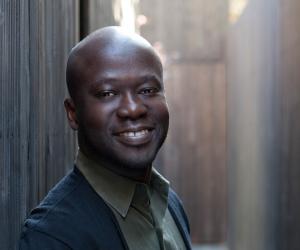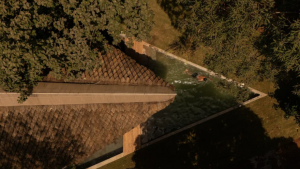Dezeen and MINI World Tour: we speak to architect David Adjaye, fresh off the stage from his presentation at Design Indaba, about his relationship with Africa and why he believes the continent provides a great opportunity for architects.
Adjaye was born in east Africa, to Ghanaian parents, before moving to London at 14. He explains that, after graduating from the Royal College of Art, he felt the need to return to the continent where he grew up.
"I wanted to revisit the continent of Africa" he explains, "but I wanted to revisit it, not through the lens of my parents or through any kind of formal experience, tourism or anything. I wanted to claim it for my own."
He spent 11 years, from 1999 to 2010, visiting the capital city of each country on the continent "to try to understand the nature of the cities in Africa, to understand their past and their present, to understand their history and their geography."
Through this research, which was published as a seven-volume book, Adjaye realised the importance of Africa's unique geography. "It became clear to me that the political map of Africa that we have is a very difficult way to understand the continent," he says. "Fundamentally, the way we should be looking at it is through geography."
Adjaye created his own map of the continent (below), divided into six distinct geographic zones, which, he believes, have shaped African culture. "In these [zones], all the civilisations of Africa have manifested themselves," he says. "Their unique identities come from that, the artefacts of the continent reflect that geography."
This realisation was important to Adjaye's own approach to architecture. "I wanted to create a blueprint for how I wanted to work on the continent," he explains. "I didn't just want to make contemporary architecture with the usual references of anonymous abstracts and global things, I wanted to find a way of making architecture that could take onboard issues that are big, but also specific enough to make unique objects."
Adjaye believes that, despite the continent's considerable problems, Africa presents a great opportunity for architects. "GDP growth over the last decade is anything between 10 and 15 percent, which is extraordinary. It's greater than what China was doing," he explains. "This economic drive is changing the political paradigm because as people are becoming more wealthy they are starting to question politically their structure.
"What's amazing is that, unlike working in Europe or America at the moment, [as an architect] in Africa you can try to ascribe a new paradigm. If you get the right political agency and the right construction environment, you can make extraordinary moments in architecture. That for me is very exciting."
This movie features a MINI Cooper S Countryman.
The music featured is by South African artist Floyd Lavine, who performed as part of the Design Indaba Music Circuit. You can listen to Lavine's music on Dezeen Music Project.










